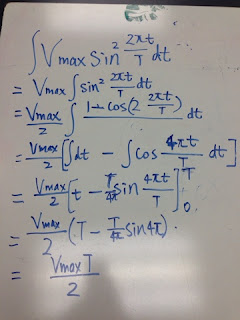Quick review on the most helpful LRC circuit equation. Impedance Z =sqrt(R^2 +(Xc-XL)^2) and the Irms=Vrms/Z. Assume we double the frequency, the current will be doubled.
Connect resistor capacitor series in AC circuit and measure the voltage and current, draw the graph on logger pro and find the V max and I max.Compare the experimental value with the theoretical values using impedance equation.
This is the circuit board where we connect resistor and 470 F capacitor
Next, we move add inductor into the previous circuit in series and repeat the measurement.This is the graph we get form logger pro
After adjusting the time interval, we get a smooth sin graph.
This is the current vs time graph.
We calculate the phase shift for the previous graph using (XL-Xc)/R
This is the data for comparing theoretical / experimental value of I and V in RC circuit
This is the data for comparing theoretical / experimental value of frequency in LRC circuit
Conclusion:
We measured V and I in LRC circuit. It is a different pattern and we can calculate the "resistance" Z.
We review and practice the equation for impedance Z,which is similar to resistance. We find that if the LC circuit is in resosance the V0is 0 since the impedance is 0; and we have known there are phase shift that we can calculate between the V and I in LRC circuit.



















































